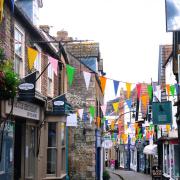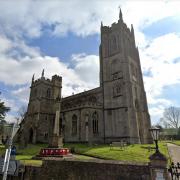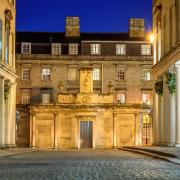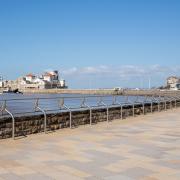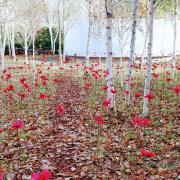In our special series Catherine Courtenay takes a look at village life in Somerset
In 1820 a gentleman from Worcestershire arrived in Simonsbath having just bought most of the former Royal Forest of Exmoor for £50,000.
John Knight paid a lot of money for a vast area of mainly bog and moorland. He was an industrialist who knew about agriculture and running estates and he embarked on a land reclamation project, the largest in the country. At the heart of this he would make his own manor house estate, Ashcombe, with associated buildings and landscaped gardens at Simonsbath.
The modern-day visitor to Simonsbath will encounter a tiny village, set in the beautiful Barle River valley and surrounded by woodland. Two major buildings dominate, the Simonsbath House Hotel and the Exmoor Forest Inn and there’s a church set just back on the hillside.
It’s hard to visualise how the place would have looked before John Knight’s arrival, but the only building in the area was a lodge, now the hotel, dating back to the 1600s. The area was mainly used to graze sheep during the summer months, but Knight set about transforming it by building roads, a boundary wall, a canal network, buildings and farmsteads – a project that continued with his son Frederic after his wife’s ill health led to John moving abroad.
The mansion was never completed but tantalising traces of the Ashcombe Gardens remain and in recent years have sparked renewed interest, both in their own right and as part of the Knights’ story and how the family shaped the Exmoor landscape.
After being bought by Exmoor National Park Authority in 2013 two key buildings in the village, the old school and White Rock Cottage, have now been restored. The little school was a later addition, along with St Luke’s Church, but the cottage was built by John Knight and was an indicator of how he was designing his garden.
Lead volunteer on the Ashcombe Gardens Project, Charlotte Hornsby, says the cottage was made to look like a Scottish croft, and to be viewed from the garden. The garden was designed in a picturesque style, which was fashionable at the time. Paths would lead through a ‘natural landscape’ with places to pause and experience a heightened sense of emotions, through the use of rushing water, peaceful woodland glades or dramatic rockface, for example.
It’s hard for casual visitors to visualise these gardens, but paths, outcrops and bridges are slowly being uncovered. Charlotte says the aim is to reopen one of the original walks through the garden, so people can follow in the footsteps of the Knights.
Walking is a popular draw for visitors to Simonsbath. The village is on the Two Moors Way and there’s a particularly beautiful route along the river valley to the old copper mine workings at Wheal Eliza and Cow Castle, an Iron Age hill fort.
Another key building, from the time of Frederic Knight, is the sawmills. The building fell out of use after it was badly damaged in the floods of 1952, but was restored around a decade ago.
Last year Exmoor National Park Authority leased it to Nick Hosegood and Kerrie Wilson of Three Atop Woodland Services. The couple are passionate about good woodland management and want to see the best use of timber they gather from the moor. They never fell a healthy tree unnecessarily and want to see wood being put to good use, rather than simply chopped and burned.
“Every piece of timber we take away we categorise, note its back story and grid reference,” says Kerrie. “Our dream is to create a story out of the timber.”












